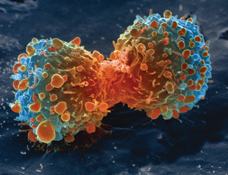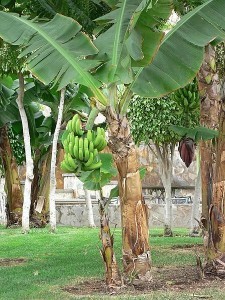 I’m a Scientist: Get me out of here! is back for two weeks from the 10th March 2014. Let’s take a look at the 15 — yes, 15! — zones we’ve got lined up. To find out more about taking part, see the bottom of the post.
I’m a Scientist: Get me out of here! is back for two weeks from the 10th March 2014. Let’s take a look at the 15 — yes, 15! — zones we’ve got lined up. To find out more about taking part, see the bottom of the post.
ComputationalBio Zone
Part of the 2014 I’m a Scientist Big Data Season
Biology isn’t all dissections and microscopes. There are geneticists sequencing genes, epidemiologists simulating disease spread, and neuroscientists mapping the brain; computers and the Big Data they generate are radically changing science. This is the first in a series of zones in the the I’m a Scientist Big Data season, where we will explore how computers are used in real science today. We’ll look at the science and scientists at the cutting edge of Big Data and explore some of the issues that Big Data presents to society. Click here to learn more about the I’m a Scientist Big Data Season.

Lung cancer cell dividing | Image courtesy of US National Institute of Health
Cancer Zone

Lung cancer cell dividing | Image courtesy of US National Institute of Health
There are more than 200 known cancers affecting humans, and in this zone we’ll meet researchers using the newest developments in biology, physics, and chemistry to find a cure.
Colour Zone
Funded by the Royal Society of Chemistry
Leave the Pink Floyd album at home; we’re not looking at light or rainbows. In the Colour Zone we’re walking the line between art and chemistry. What are applications of colour chemistry. How are paints made? Why do colours matter?
Scientists, to be eligible to take part in this zone you need to be a member of the RSC.
Extreme Size Zone
Funded by the STFC
We’ll look at the very, very large; the planets, the nebulae, and the great enveloping cosmic dark. The very, very small; the quantum universe, the quarks and the bosons. And not all that much in-between.
Scientists, to be eligible to take part in this zone you need to be affiliated in some way with the STFC.
Light Zone
Funded by the Institute of Physics
Light is brilliant for making use of the glassy globes we keep in our heads — without light our eyes wouldn’t be very much use at-all — but light can be so much more! It is an energy source, it can be used for analysis, it can even be used to move objects. In this zone we’ll look at cosmic background radiation, invisible spectra and scientists measuring the light from the beginning of the universe.
Teachers who are part of IOP’s Stimulating Physics Network will be given priority in this zone.
Nuclear Zone
Funded by the STFC
From helping to unravel the complexities of nuclear physics to using nucleons as part of an experimental toolkit: What role do the particles of the nucleus play in research?
Scientists, to be eligible to take part in this zone you need to be affiliated in some way with the STFC.
Organs Zone
Collections of tissues joined to serve a common purpose. We’re all made up of organs, but what do they all do? How do they work? And what happens when they go wrong?

Banana trees can “walk” up to 40 cm in a lifetime | Image: Rosendahl/Wikimedia
Plants Zone

Banana trees can “walk” up to 40 cm in a lifetime | Image: Rosendahl/Wikimedia
There are thought to be more than 300,000 different species of plants. One such species is the banana tree, which stands on elevated roots and can walk around 15 cm per year to seek out light.
Sports Science Zone
Throw some measurements behind it, and the Sunday kick-about in the park becomes a precise mix of anatomy, mathematics, physics, and most any other specialty of which you care to think. Sports science is big business, in this zone we’ll meet the researchers helping the next generation of athletes give 100%, and not a percentile more.
General Zones
Xenon, Caesium, Barium, Lanthanum, Cerium, and Praseodymium
Don’t fit into one of the themed zones? Want your students to learn about a wide range of topics? As ever, the general zones will each comprise five scientists covering a wide range of research areas. This March we will have six general zones. At least one — the Xenon Zone — will be exclusive to primary schools, and the Barium Zone will be for Nuffield Schools.
 Space Zone
Space Zone
I’m an Engineer: Get me out of here!
Our sister project, I’m an Engineer: Get me out of here! will also be running this March with the Space Zone. To learn more about the I’m an Engineer event, go to imanengineer.org.uk.
Apply now to take part!
Scientists apply here: imascientist.org.uk/scientist-apply
The application deadline is Friday 31st January 2014.
Teachers apply here: imascientist.org.uk/teachers
The application deadline is Friday 24th January 2014.
Thanks to the Wellcome Trust for part funding I’m a Scientist: Get me out of here!. Also to the STFC for funding the Extreme Size and Nuclear Zones, the IOP for funding the Light Zone, and the RSC for funding the Colour Zone.
For the latest updates on the event, follow @imascientist on Twitter. Our hashtag for 2014 is — you guessed it — #IAS2014.
Update: February 2014
We will no longer be running the Sports Science Zone in the March event, this has been moved to June.
